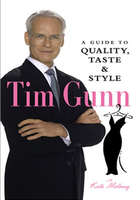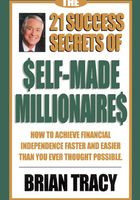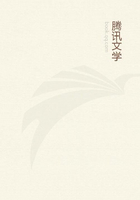I have had a monthly lunch meeting with a group of senior executives and doctors from a large hospital and medical school that are both part of a large academic medical complex. We meet to see how the hospital and medical school can further improve the quality of medical care, patient and employee safety, patient experiences in the hospital, research breakthroughs, and medical education. I have learned that the doctor community includes clinicians, researchers, and teachers who have different ultimate agendas, yet they have to coordinate their efforts and are all dependent on the same sources of financial support from the hospital and the university.
The hospital is the primary source of income for the medical school and for some of the research. The administrators, who may or may not be doctors, have to apportion funds between the needs of research, clinical practice, safety, maintenance, expansion of the delivery system in the community, and a reserve for future building projects. The doctors are all employed by the medical school, but if they are clinicians in the hospital, they also report to the hospital administrators. The senior administrators are working hard at getting everyone on the same page while recognizing that the goals of research, education, and clinical practice are to some degree different, that the individuals pursuing these goals have different personal agendas, and that their leaders are protective of those goals and agendas.
I have been invited to join this group because of my work on organizational culture, my experience as a process consultant, and my growing interest in health care and hospital administration. Over the past several years, I have also met other hospital administrators as part of a small think tank and have learned that this set of problems is shockingly common in large university-based medical centers.
As I approach tomorrow's lunch, I realize that I don't know what to do!
My Reflection on This Situation
Over my many years of consulting, I have from time to time found that being the expert and providing information and/or advice works, but only for simple, bounded problems. I have also played "doctor" to organizational clients by doing diagnoses and delivering recommendations. That has worked only occasionally, when I happened to have enough insider information about the organization's identity, mission, and cultural DNA to be able to make suggestions that would be implementable.
I learned early on to be what I called a "process consultant," someone who would help a group in the organization do more effectively what it needed to do in terms of its basic function and mission. That usually involved getting into a relationship with the client that would enable us to figure out together what was wrong and how to fix it. But that process also failed if the problem was complex, culturally multifaceted, and constantly changing. To deal with my medical lunch group, I needed yet another way to think about how to be helpful in the face of such complexity and rapid change.
I then thought about the implications of a case that happened a few years ago that I call "my most successful consultation on the perplexing problem of how to change culture."
CASE 1. Culture Change in Beta Power Company
Potential client on the phone: Hello, Dr. Schein, this is Sue Jones from the Beta Power Company. I am the head of HR and Management Development. Our new CEO asked me to call you to find out if you would be willing to come and help us change what we have discovered to be a rigid, stodgy formal culture. It is hard to get any new programs going because we keep running into these old traditions and ways of doing things. Would you come visit our company to learn more and help us launch some culture change programs?
(As I listened to this proposal and question, I sensed two main reactions in me. First, it sounded interesting and was certainly within the range of the types of projects that I felt I could tackle successfully. But, second, I recalled having had some bad experiences visiting organizations without knowing more, and especially without knowing what the new CEO actually had in mind in what he called "a rigid, stodgy culture." I also wanted a little more information about the motivation of the CEO. Was he just going to have Sue Jones do this? Or would he involve himself, which would be crucial if culture change was to happen. These thoughts led to the following conversation, which I call personalization.)
Ed S.: That sounds interesting and could be complicated. I think it might be important to talk about this with the CEO away from the company to explore what is going on and what he has in mind. Do you think he would be willing to talk with me separately and maybe visit me in Cambridge?
(This response was the first of what I call adaptive moves to begin to build a more personal relationship with the client to find out what is really on his mind.)
S. J.: You are right that we maybe need to talk this through away from the company, so let me explore with him the possibility of coming to see you. I'll get back in touch.
(A week later.)
S. J.: I spoke to our CEO, and he was quite enthusiastic about coming to visit you. He will bring his new COO as well, and I will be accompanying them. So when can we set a date for a half-day meeting?
Ed S.: Here are some dates to check out. Also, I presume it is understood that I will be billing you for this half day.
(I had learned from other experiences that sometimes the best help occurs in the early meetings, so I would bill for those early meetings unless it was clearly a short exploratory phone call, lunch, or visit.)
S. J.: That sounds good. We will let you know which date.
(We met two weeks later in the garden at my house at 9 a.m. I chose to meet at my house to provide a setting that could involve food and drinks, and was therefore an invitation to personalize the situation.)
Ed S.: Welcome! Let's talk about what is on your mind about this "rigid, stodgy culture."
CEO: OK, Ed. May I call you Ed?
Ed S.: Sure.
CEO: When John [the COO] and I began to try to implement some new programs in the company, we kept finding old habits and traditions that people seemed to want to hold on to, like the culture has kind of fossilized.
Ed S.: Can you give me an example?
(This is almost always a good thing to ask because at this point I have no idea at all what they are talking about, what their concept of culture is, or what is actually bothering them. No sooner had I asked this than John sat up in his chair and jumped into the conversation with great intensity.)
COO: Yes, Ed, I can give you a great example that just happened yesterday. I have a staff group of about fifteen people with whom I meet regularly in this big conference room, and they always sit in the same seats. Okay, so yesterday we met, and there were only five of them there, and they again sat in those same seats, even though that meant they were scattered all over the room!
(John looked at me expectantly, opened his hands in a gesture of "see what I am up against," and paused. At this moment I was overwhelmed by my curiosity and impulsively gave in to it without considering the possible consequences. Ask yourself what you might have done at this moment.)
Ed S. (with intensity): What did you do?
COO: My god, I didn't do anything …
(There was a long pause during which I think the CEO, the COO, and Sue all had the same insight. Here we had the top two executives of the organization complaining about stodgy subordinate behavior and asking an outsider to help them "change the culture." Somehow it had not occurred to them that their passivity was tacitly condoning the "cultural behavior" they were complaining about. I was reminded of the sage comment "You get what you settle for.")
We spent the rest of the morning listing all the actions that they could take that would send a clear signal to the organization that behavioral changes had to be made. I referred them to my Organizational Culture and Leadership (4th ed., 2010) in which a whole chapter discusses how executives can influence culture. At this point I felt quite comfortable playing "doctor" and recommending something. We agreed that the only further thing I should do is to check in with them every few weeks by phone to see how things were going. The CEO called me regularly over the next few months and occasionally sent me e-mails describing actions he was thinking about to get my reactions. I billed him for my time spent and provided further suggestions as needed. I did not visit or launch any formal culture projects. None were needed. I had helped them see how they could manage the culture change perfectly well on their own.
LESSONS
The help that they got was not connected in any logical way to what I had done. There was no diagnosis, no analysis, no prescription. I had no idea that my impulsive question would reframe their problem as one that they could deal with themselves. I had resisted various diagnostic questions such as "How did you feel about that," or "Why do you think they always sat in their same seats," and instead I had given in to my curiosity. They were delighted to have a way of moving forward that did not involve a complicated diagnostic period followed by a complicated change program. The real problem was not the stodgy culture but their own behavioral paralysis; the presented problem might have taken months to unravel, while the real problem led to an immediate adaptive move.
My important "intervention" was to invite them to my house and ask them to "give me an example," to personalize and get a more specific sense of what was going on. What was driving me was a mixture of curiosity and commitment to being helpful.
Focusing directly on "culture" did not seem to lead anywhere, whereas focusing on their own behavior revealed what the client actually wanted to accomplish. They did not want to know about their culture. They wanted to change it. A culture analysis would have been a waste of time and possibly would have distracted them from steps that they could take immediately to solve the problem that motivated them to come to a consultant in the first place.
The Paradox of Messy Complexity and Fast Help
This case taught me that help can happen fast. But you need to find out what is really on the client's mind and honor your own curiosity. Complex messes like the one at the university-based medical school and hospital did not lend themselves to such fast help but did illustrate that adaptive moves could be helpful. My experience with similar messes occurred in a variety of organizations with which I've had long-term relationships. In those cases, as in the problems I am encountering with clients now, the mess only emerges as initial moves are made that reveal deeper layers of issues and concerns. For example,
I worked with Digital Equipment Corporation (DEC) on and off for thirty years, which involved primarily helping the founder Ken Olsen deal with whatever was on his mind and working with various members of senior management as I got drawn into the daily operations of this organization. Some help happened very fast, as we will see, and, sadly, some needed help was never provided.
For more than ten years I worked with ConEdison, the utility that supplies the greater New York area with electric power, gas, and steam. They are operating an old system that requires careful and continuous maintenance to avoid accidents that can be deadly to the public and to their own employees. They are also responsible for maintaining a clean and safe environment under conditions of changing seasons and changing weather. I worked with senior management and the vice president of Health, Environment, and Safety to help them maintain safety in a complex, unionized, highly technical environment in which limited resources were fought over for much-needed maintenance and new improvements while the public, the regulators, and the environmental watchdogs totally mistrusted the company's efforts because of events a decade or more earlier. A similar scenario is playing out in Pacific Gas and Electric, with similar levels of complexity.
I encountered closely related problems in my five years of working with INPO (the Institute of Nuclear Power Operations) as part of an advisory board to help that organization in its mission of assessing and aiding the 104 individual nuclear plants operating in the United States. INPO had the problem of how to help plants maintain an absolutely safe environment under different technological, economic, and political conditions because the power companies had complex sites that included coal-fired and nuclear plants. The nuclear plants experienced rapidly changing technology while they were losing technical talent as the alumni of Admiral Rickover's nuclear submarine organization retired. Nuclear safety is highly regulated, which creates the paradoxical reality that the enforcement of legal, technical, and bureaucratic standards often gets in the way of building the open and trusting relationships that are needed and always mentioned as integral to "safety culture."
I worked for five years with the Swiss-German chemical company Ciba-Geigy. In working on various strategic and operational issues, I learned some powerful lessons about organizational and national culture and saw many complex messes, some of which were ultimately resolved by the merger of Ciba-Geigy with Sandoz into what is today Novartis. One messy problem that occurred in this and in another pharmaceutical company was the tension between basic research on the origins of disease and applied research on developing pharmaceuticals that cure or at least alleviate the symptoms. Aligning basic research on the causes of diseases with applied research on curative drugs under different sets of rules in different countries leads to value differences on what is "good research" that can be trusted when done in different countries. Can basic researchers, applied researchers, practitioners, and administrators find common goals and work together, or are the occupational differences culturally too diverse?
I was a board member of Massachusetts Audubon Society, the major land conservation and environmental steward in New England. Some of the most interesting helping challenges in my six years there occurred when fundamental strategic questions interacted with the constraints of local community values, legal issues, lack of funds, and limitations of what the organization could actually accomplish. For example, should they support the building of windmills in the waters around Cape Cod, given that this was good for energy conservation but potentially bad for birds and fish?
Current problems that have been brought to me reflect growing complexity around coordination between silos, between functions, and between cultural units. For example, a CEO wants a better process for hiring researchers to overcome the following "problem": while the principal investigators are still waiting for the grant money, they are pressuring the human resources function to begin to advertise for the needed research jobs, leading to promises of employment that occasionally cannot be honored because the research money did not come through, resulting in both embarrassment and lawsuits.
A hospital system that has units all over the country wants to standardize certain medical processes, only to discover great resistance from several regional units that have developed strong cultures of their own and believe that their local processes are better.
A successful theater company specializing in Shakespeare finds its market shifting because of the audience's desire for more contemporary productions while, at the same time, it is running out of money. The presenting problem is that the management neither wants to nor knows how to innovate.
What I am trying to convey in these examples is the complexity and ambiguity of figuring out what to do if we are asked to help. Sometimes the best and fastest help will be to enable the client to understand that very complexity and recognize that small adaptive moves will have to replace big diagnoses and interventions.
Why Are Problems Messier These Days?
As I reflect on this question, several forces acting together seem to be involved:
1. All the technical fields that have to collaborate have themselves become more complex. What this means is that the specialists working in those fields are more likely to create an occupational culture to distinguish themselves and get more benefits for their specialty.
2. The groups that have to interact and collaborate are not only more occupationally diverse but they now often include national cultures that have different languages and different assumptions about how things are and how things are supposed to be.
3. Greater occupational and national diversity within a given organization makes goal congruence more difficult to achieve. We all agree that the easiest way to "solve" these problems is to get everyone on the same page, bring all the "chiefs" together in the same room, and get them to agree on a single goal that everyone can relate to and support. Unfortunately, getting the right people in the same room is usually the hardest part of this pseudosolution, and, even if we do, there is no guarantee that they will want to reach any kind of consensus because of deep differences in tacit cultural assumptions and goals. All the wonderful organization development processes that we advocate, like team building, scenario planning, future search, appreciative inquiry, lean production systems, and rapid prototyping, tend to assume that the people who have to agree to coordinate can be gotten to even talk to one another, much less agree on anything.
4. There isn't enough time, or at least we perceive that there isn't. Things are moving too fast to build trusting relationships, to get to know one another, to even eat together or have fun together. Getting two cultures to interact takes time. Getting three or more to interact takes more time. Speeding up processes such as going to one of the many models of rapid prototyping might work if we have figured out which process to prototype and gotten people into them that can communicate with one another. All too often we prototype the wrong process.
5. The problems that have to be addressed are not stable. The two things that are new and different about these kinds of problems is that they do not have a technical solution, and they are deeply intertwined with fundamental strategic and structural issues in an unstable environment. In an unstable environment, when an organization attempts to make sense of a given situation at time 1, any interventions produce unknown effects that change the nature of the problem at time 2 and require brand-new sense-making efforts.
6. Finally, the concept of client will change as well in that the various individuals or groups with whom I am talking see themselves as part of a system rather than as individual clients. I may be coaching an individual executive in a key role, but it becomes immediately clear that what worries her has implications for others in the organization so that the problem formulation has to be systemic and that whatever adaptive moves are considered have to take into account the systemic consequences which, paradoxically, may be unknown.
The Need for a New Model
We are dealing with new complex problems, new kinds of client systems, and a new sense of urgency in our clients. We therefore need a new consulting model-Humble Consulting (HC). This model will tell you what attitude to strike with your clients, how to respond to their very first inquiry, and will help you to accept that initially you might not know what to do. HC is a totally different way of relating to your clients. HC presumes that you are committed to being helpful, bring a great deal of honest curiosity, and have the right caring attitude, a willingness to find out what is really on the client's mind.
You will then approach your first contact with that potential client with the intention of building an open and trusting relationship, and you will know that this more personal relationship will lead not only to finding out what is really on the client's mind but also to discovering whether you can help in the traditional expert or doctor role. And, paradoxically, you will discover that the relationship-building process itself leads you to behavior that the client may find immediately helpful. What you decide to do, how you will react, will not be big diagnoses or interventions but small adaptive moves.
The essence of that relationship-building process will be to get past the formality of professional distance. Either you or the client will have to personalize the process by asking a personal question or revealing something personal. You will have to make yourself somewhat vulnerable. What exactly you will ask or reveal will depend on the situation and who the parties are, but commitment, curiosity, and caring will guide you.
Humble Consulting is new in several respects. In the next chapter, we look at this in more detail.















